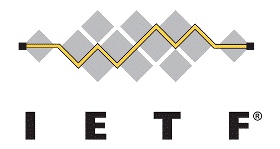
HTTP/3 is the next protocol for network conversation throughout the Internet, which is intended to partially exchange HTTP/1 and HTTP/2. Just one month prior to the future QUIC Doing work Team conference, to be held in Zurich following February, it might be beneficial to recap what HTTP/3 claims and what its current consumer/server help seems like.
HTTP/3 guarantees to make Online connections quicker, more reputable, and extra protected. Born as “HTTP around QUIC”, an effort to adapt the HTTP protocol to operate on prime of Google’s have transport layer protocol, QUIC, it was later proposed as an IETF regular and it is at this time an World-wide-web Draft. In October 2018, IETF HTTP & QUIC Working Teams Co-chair Mark Nottingham proposed to rename HTTP around QUIC as HTTP/3 to make clear its real character and its independence from QUIC.
QUIC is a critical element of HTTP/3, because it presents the foundations for its principal capabilities. Developed on major of UDP, QUIC makes an attempt to fix the important issues knowledgeable when working with the TCP protocol, i.e., relationship-establishment latency and multi-stream dealing with in the existence of packet reduction. TCP latency difficulty stems from the necessities of its congestion regulate algorithm, which mandates for a sluggish start out to assess how substantially targeted traffic can be sent prior to congestion occurs. This compounds, in HTTP/1., with the simple fact each TCP request/reaction trade is assigned a new relationship, consequently incurring the slow-start off penalty.
Ever considering the fact that, the try to circumvent TCP sluggish-begin, has been at the core of successive attempts to strengthen the HTTP protocol.
HTTP/1.1 released “continue to keep-alive” connections to enable to sequentialize many ask for-reaction exchanges above the exact same TCP relationship, thus not demanding a new connection establishment phase for just about every request. HTTP/1.1 preserve-alive connections, while, do not help sending multiple requests out at the identical time, which yet again resulted in a bottleneck owing to the rising complexity of Net pages.
HTTP/2, based on the now deprecated SPDY protocol, released the notion of initial-class streams embedded in the identical connection. This enabled simultaneous ask for-response exchanges but with a big flaw: when packet reduction boosts, HTTP/2 performance degrades because of to TCP way of working with packet retransmission, which finishes up impacting equally, i.e., halting, all streams sharing the same connection. When packet reduction surpasses a provided threshold, paradoxically, HTTP/1 various connections materialize to perform a lot more proficiently then HTTP/2.
As outlined, QUIC has first-course streams, which solves the connection slow-start out latency as it takes place in HTTP/2. Furthermore, it handles them separately from a person one more, which solves the effectiveness issues because of to packet loss. Adopting QUIC as its transportation layer protocol is HTTP/3 largest action away from HTTP/2. Given that QUIC natively implements a quantity of characteristics connected to streams administration that were integral sections of the HTTP/2 specification, people could be eradicated from HTTP/3. Additionally, the adoption of QUIC demanded to develop a new HTTP header compression scheme, QPACK, since HTTP/2 HPACK header compression is seriously dependent on the purchase in which TCP delivers packets to the endpoints.
For several yrs, Google has been employing QUIC for its personal expert services, including look for, YouTube, and some others, and also supported it in Chrome. For a although, Chrome was the only way to use QUIC when communicating with Google providers supporting it. A short while ago, Mozilla included aid for HTTP/3 in Firefox 72, as well, although nevertheless experimentally. The command-line resource curl also extra help for HTTP/3 in edition 7.66., along with numerous added attributes. Server-facet, HTTP/3 is supported by LightSpeed and Nginx.
On the Cloud entrance, in addition to Google, Cloudflare declared a few months ago to have preliminary enabled HTTP/3 for a section of their shoppers. Cloudflare is also the corporation behind Quiche, an open up-resource Rust library enabling the implementation of HTTP/3 clients and servers.
As talked about, HTTP/3 is nonetheless getting described by IETF, with no official release day set however. Meanwhile, adoption of HTTP/3 is growing all over the world, with virtually 300,000 providers utilizing it throughout the world. Google is nevertheless the best group to deploy HTTP/3, but many other individuals acquire a non-insignificant share. InfoQ will go on to timely report about HTTP/3 to hold our viewers up to day about the evolution of the Internet







